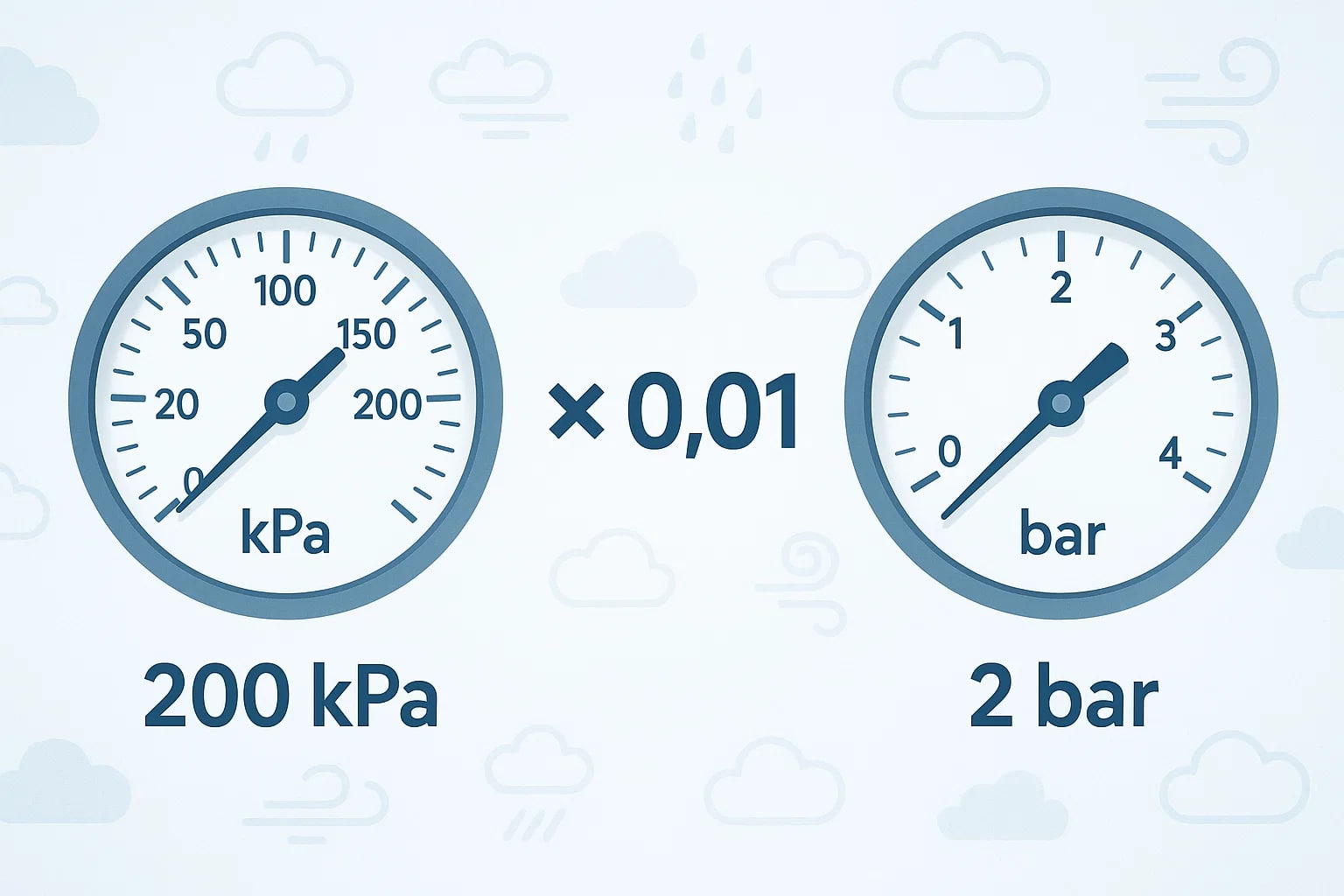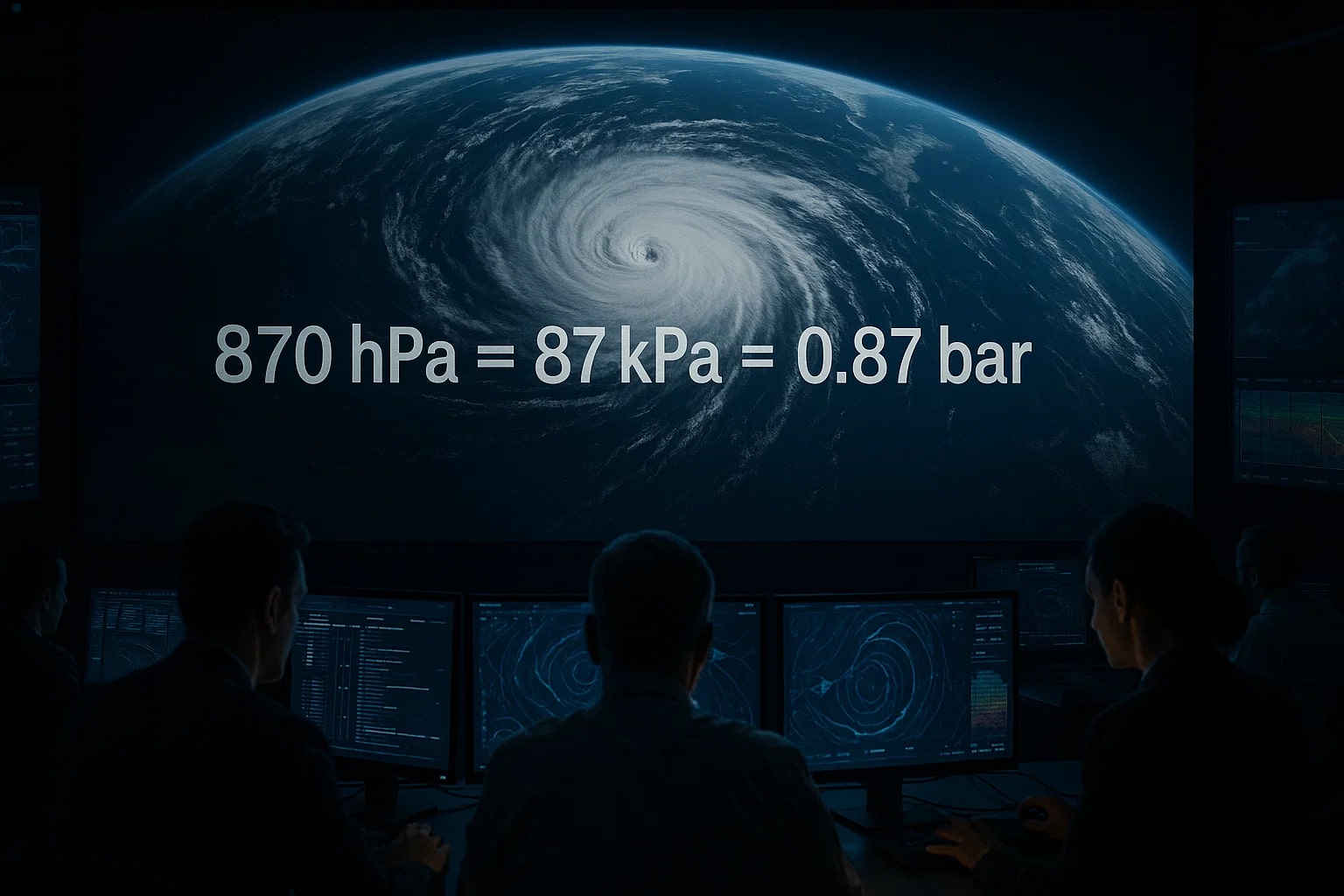kilopascal to bar - How to convert kPa to bar
Pressure plays an essential role in science, industry, and everyday tools like tire gauges. One of the most common conversions is from kilopascal to bar (kPa to bar). Both units measure pressure but belong to different systems, and knowing their relationship helps in accurate measurements—whether in weather forecasting, automotive maintenance, or engineering projects.
What is a kilopascal (kPa)?
The kilopascal (kPa) is a metric unit of pressure equal to 1,000 pascals. It is widely used in meteorology, material testing, and industrial systems. For instance, standard atmospheric pressure at sea level is about 101.3 kPa.
What is a bar?
A bar is another metric unit of pressure, set at 100,000 pascals. It was introduced in the early 20th century to provide a convenient unit close to atmospheric pressure. Meteorologists, divers, and engineers still use it today for its simplicity.
Conversion formula kPa to bar
The formula to convert kPa to bar is simple:
1 kPa = 0.01 bar
So, to convert kilopascal to bar, multiply the pressure in kPa by 0.01. For example:
-
200 kPa × 0.01 = 2 bar -
500 kPa × 0.01 = 5 bar -
101.3 kPa × 0.01 ≈ 1.013 bar
This makes the conversion especially handy in atmospheric studies, since the average sea-level pressure is almost exactly 1 bar.

Did you know?
-
kPa in sports: The pressure inside a standard soccer ball is typically measured in kilopascal. FIFA regulations state it should be between 60–110 kPa, ensuring fair play and proper bounce.
-
Bar in diving: Divers measure the pressure underwater in bar because every 10 meters below the surface adds roughly 1 bar. This makes the unit intuitive for scuba professionals.
-
kPa in weather reports: Meteorologists use kilopascal when tracking atmospheric pressure. A low-pressure system at around 98 kPa often signals stormy conditions.
-
Bar in printing: High-pressure printing machines rely on bar to ensure ink transfers evenly onto paper, essential for producing crisp newspapers and magazines.
A storm that redefined pressure readings
In 1979, Typhoon Tip struck the Pacific Ocean and set the record for the lowest sea-level pressure ever measured: 870 hPa (87 kPa). Meteorologists around the world followed the storm with awe as it grew to nearly 2,220 km in diameter—about the size of half the continental United States.
To put that into perspective, the storm’s central pressure converted to bar was only 0.87 bar, compared to the normal 1.013 bar at sea level. This dramatic drop in pressure fueled devastating winds and rain, reminding scientists how critical accurate pressure measurement is for predicting and preparing for extreme weather events.
The Typhoon Tip case shows how vital it is to convert seamlessly between kPa and bar in meteorology, where every decimal can mean the difference between calm skies and disaster.

From storms to sports: the power of kPa to bar
The conversion from kilopascal to bar (kPa to bar) is straightforward: just multiply by 0.01. While the math is simple, its impact stretches far beyond the formula. Whether it’s predicting the path of a typhoon, ensuring the right soccer ball pressure, or preparing divers for the deep sea, this unit shift keeps the world running smoothly.
For quick and precise results, try our Conversion Tools. If you often work with pressure units, the Pressure Converter is especially useful.
From the roar of a storm to the silence beneath the ocean, pressure defines our world. Knowing how to convert kPa to bar transforms numbers into knowledge—and knowledge into confidence.

